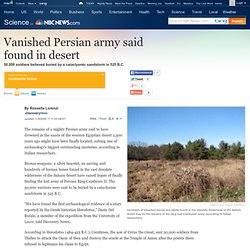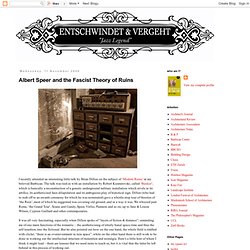

Article. Video. Vanished Persian army said found in desert - Discovery.com- msnb. The remains of a mighty Persian army said to have drowned in the sands of the western Egyptian desert 2,500 years ago might have been finally located, solving one of archaeology's biggest outstanding mysteries, according to Italian researchers.

Bronze weapons, a silver bracelet, an earring and hundreds of human bones found in the vast desolate wilderness of the Sahara desert have raised hopes of finally finding the lost army of Persian King Cambyses II. The 50,000 warriors were said to be buried by a cataclysmic sandstorm in 525 B.C. "We have found the first archaeological evidence of a story reported by the Greek historian Herodotus," Dario Del Bufalo, a member of the expedition from the University of Lecce, told Discovery News.
According to Herodotus (484-425 B.C.), Cambyses, the son of Cyrus the Great, sent 50,000 soldiers from Thebes to attack the Oasis of Siwa and destroy the oracle at the Temple of Amun after the priests there refused to legitimize his claim to Egypt. Albert Speer and the Fascist Theory of Ruins. I recently attended an interesting little talk by Brian Dillon on the subject of ‘Modern Ruins’ at my beloved Barbican.

The talk was tied-in with an installation by Robert Kusmirovski, called ‘Bunker’, which is basically a reconstruction of a generic underground military installation which revels in its artifice, its aestheticised faux-dilapidation and its ambiguous play of historical sign. Dillon (who had to rush off to an awards ceremony for which he was nominated) gave a whistle-stop tour of theories of ‘the Ruin’, most of which he suggested was covering old ground, and in a way it was. We whizzed past Rome, ‘the Grand Tour’, Soane and Gandy, Speer, Virilio, Pasmore and so on, up to Jane & Louise Wilson, Cyprien Gaillard and other contemporaries.